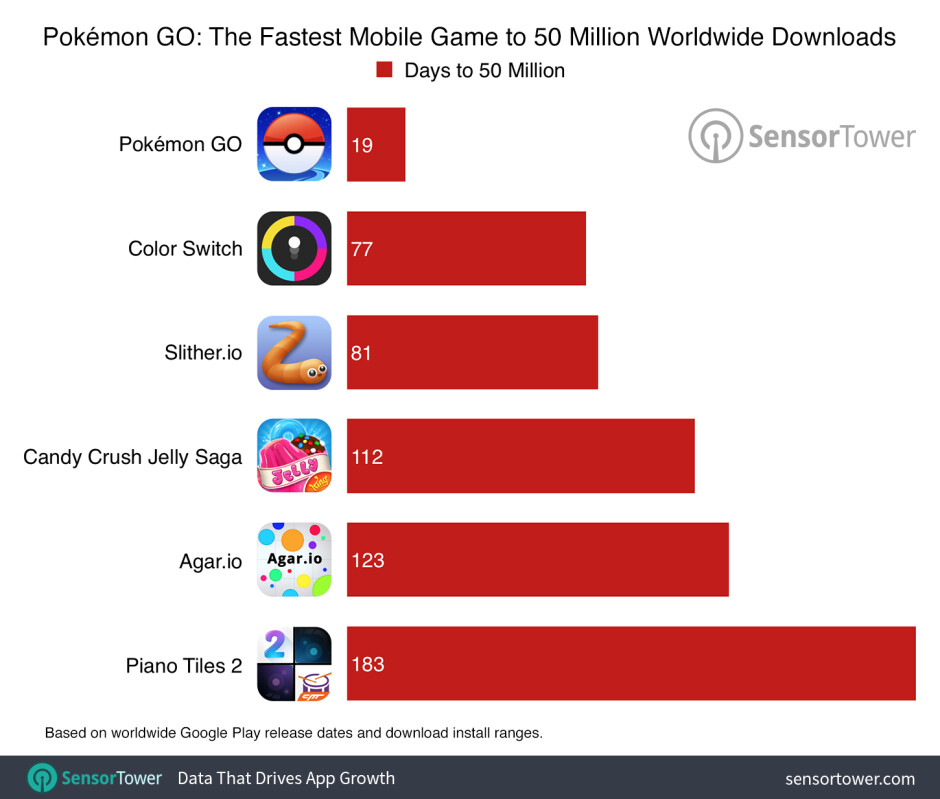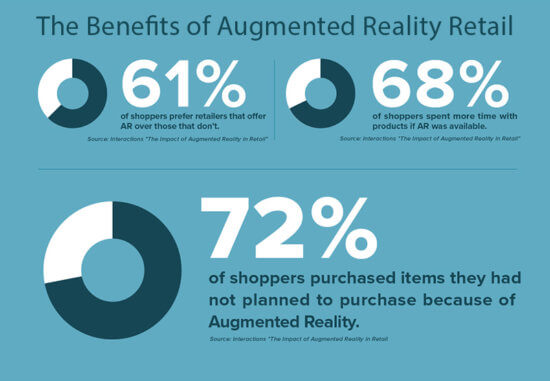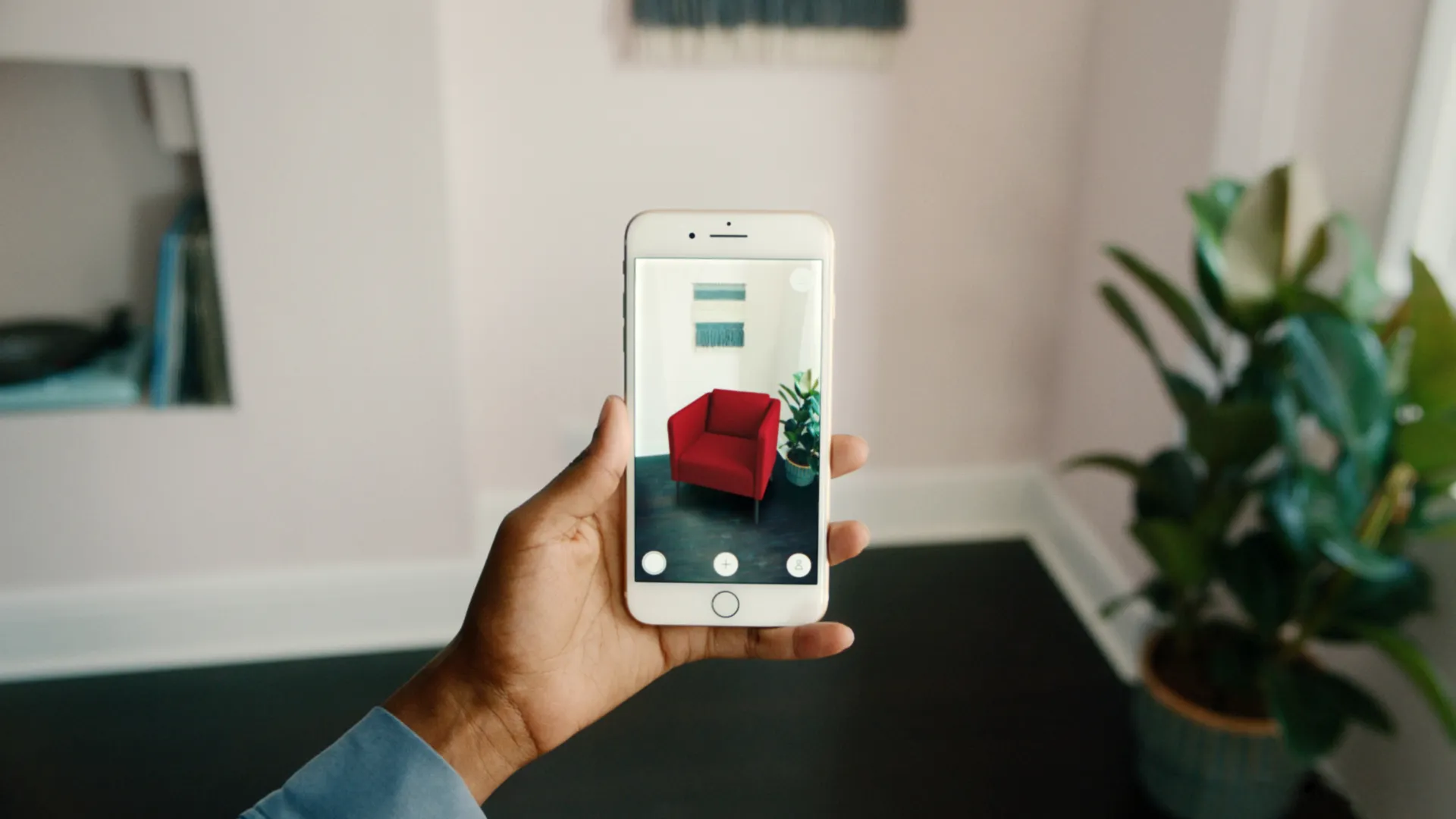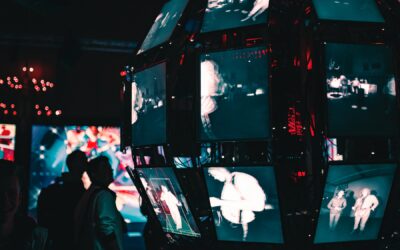Amazingly, out of the $3 trillion that’s spent by consumers in commerce prior to Coronavirus, only 9% is actually spent online. This widespread favouring of physical shopping has prompted more brands to look at adopting digital methods for fooling shopping as a way of boosting revenue while driving consumer engagement as well as brand awareness and loyalty. The solution? Augmented reality.
Augmented reality is a transformative enabler for offline engagement that brands and retailers are implementing to comprehensively digitise the consumer experience. This form of digital innovation is already prompting a shift in how retailers conduct business – but how exactly is AR helping to shape the future of marketing strategies of companies?

(Image: The Economist)
As we can see from data published by The Economist, the allocation of GDP spending on AR technology is set to significantly ramp up across global economies, with the US forecast to put almost 3% of its gross domestic product towards the emerging technology.
Over the past few years, AR has started to impact how consumers interact with products. In 2019, Gartner boldly claimed that “by 2020, 100 million consumers will shop in AR online and in-store.” Although the arrival of the COVID-19 pandemic disrupted this prediction, 75% of consumers expect retailers to offer them an augmented reality experience – so it’s logical that this will continue to develop as we transition away from the health crisis and towards the realm of the ‘new normal.’
Although AR is an emerging technology, it’s already starting to become an integral part of the shopping experience for consumers. Brands like Tesco, Converse, IKEA, Zara and Lacoste are tapping into AR solutions to embed interactive content within their products to create an immersive experience.
The potential applications of AR can be seemingly endless. Imagine arriving in the airport of a new city and scanning a QR code of a tourist attraction advertisement before being immersed into a digital walkthrough of the landmark. Or picture your child scanning the packaging of a lunchtime snack to play a mobile mini-game.
Creating AR content can aid brands and retailers in growing their business in refreshing ways while developing a greater understanding of their consumer behaviours. The insights offered can help businesses to understand how consumers engage with their products and what marketing campaigns work better than others. AR can enable brands to develop a more detailed understanding of consumer engagement and allow brands to enhance this engagement in a new and exciting way.
Retailers are continuing to look into ways that augmented reality can be implemented, and the more experimentation with the technology that takes place, the sooner we can realise a future of an integrated AR shopping experience on offline environments. AR facilitates a greater deal of interaction between retailers and their consumers – the brand can share interesting augmented content with the consumer, who, in turn, learns more about the product in an engaging way.
One example of this engagement can be found in a recent Toyota Hybrid AR app that was developed to help consumers to understand the company’s new C-HR model. Using the app, customers could interact with the car’s new features. Other companies like Sephora have been using AR for over five years and created a feature called Virtual Artist on its main app – enabling customers to see how some of their beauty products would look by digitally imposing them on the user’s face.
Augmented reality will change both offline and online shopping in a post-COVID-19 landscape where customers look for engaging experiences both while browsing on the internet and in brick-and-mortar stores. With this in mind, the greater immersive capabilities of AR will pave the way for a more engaging future in marketing.
How Businesses Have Been Utilising AR in The Past
Early applications of AR can be found in the efforts of Snapchat, where users have the ability to overlay animation on videos and images of themselves by using their faces as a marker for anything from dog ears to clown make-up.
This approach to augmented reality has been utilised by many companies like Starbucks and Guinness as a way of promoting their brands while advertising in imaginative ways. Marketless AR can be less restrictive but has been altogether more difficult to pull off. One significant example of this can be found in Pokemon Go, an app that took the world by storm in 2016.
Pokemon Go, an app created by Niantic partnering with Nintendo, prompted global hysteria as users of all ages downloaded the app to physically leave the house and hunt for pokemon in real-life settings.

(Image: Phone Arena)
Amazingly, it took Pokemon Go just 19 days to reach 50 million downloads worldwide – a record-breaking pace for any mobile game, let alone one utilising emerging AR technology. The app enabled people to follow maps to find certain pokemon on their smartphones before using the built-in camera to catch them as they moved digitally around real-life landscapes.
Although it could come across as superficial or gimmicky for businesses to incorporate AR in their digital marketing strategy, it’s worth looking at the real-life benefits of the technology. The lines between gimmicks, novelty, and a genuine ‘wow’ factor can sometimes be blurred. This instead presents AR as a huge brand awareness opportunity. When augmented reality is effectively implemented, it becomes a leading conversation point – enabling your brand awareness to rocket.
With greater brand awareness comes more downloads and engagements, while the interactive element can leverage a better response for user satisfaction. Significantly, it provides businesses with a way to present their digital marketing to customers in a brand new format. Unlike with traditional print and online advertising, where content is presented to a customer in a way that attempts to prompt them to take the next action, AR can create an immersive experience that engages, encourages and guides them through a conversion – making the whole process much less one-sided.
Delivering on Consumer Wants & Needs
The introduction of augmented reality solutions in both marketing and gaming has clearly resonated with consumers. Despite the technology still being in its fledgeling stages, the impact of AR and its immersive qualities have made the adoption of such solutions a highly profitable and even essential act for some companies.

(Image: Smart Insights)
According to Smart Insights data, as much as 61% of shoppers now prefer retailers that offer augmented reality over those that haven’t yet embraced the technology. The use cases of AR shows that digital renderings of products in real-life landscapes can play a key role in informing purchasing decisions and now consumers are intent on gaining the same level of security and insight into other products before they decide to make a purchase.
Significantly, 68% of shoppers also tend to spend more time with products when AR insights are available. This means that purchasing decisions can be informed by augmented reality keeping consumers connected to their prospective purchases for longer. With more time learning about the product, its features, and how it digitally looks on them, a purchase can become much more likely.
Perhaps most importantly of all, 72% of shoppers had made unexpected purchases because of the influence of augmented reality. This stat indicates that AR can not only work to complement products but to actively become a driving force in leveraging purchases.
As marketers get to grips with the potential of augmented reality, it’s clear that consumers have interacted for long enough with the technology’s predecessors in Pokemon Go and earlier retail applications that there’s certainly a market that’s ready to be wooed by the immersive quality of AR and its applications.
The Future of Augmented Shopping
Augmented reality is already playing a significant role in altering the way we shop online. For example, both IKEA and Home Centre have created dedicated apps that allow users to digitally place items of furniture virtually in their homes.

(Image: WIRED)
These apps retain the aforementioned ‘wow’ factor and while there may be customers drawn to using these apps more as immersive gimmicks, the practical applications of AR mean that these platforms can find sustainability through the valuable insights they offer.
By 2030, almost every retail store will be AI-driven. When you walk into a shop, mannequins will be wearing digital outfits designed according to your most likely needs and preferences. Your buying behaviour, purchase history, wardrobe, stated likes and dislikes will all become significant factors that will affect your virtual designs. You’ll no longer need to sift through sales racks or physically try on items to see how they fit – the AI interface will instantly display products that suit your measurements, sizes and taste preferences.
An existing example of this comes in the form of the Google Lens app, which is already available on Android devices. The app allows customers to scan QR codes and items through their cameras. Google Lens’s Style Match function aids users in finding products online to those that they’re viewing in physical stores – offering an invaluable bridge between offline and online retail.
Advertising is also set to be heavily influenced by augmented reality. One key example of this could be found in the innovative ways in how Stranger Things reached fans. Users were able to scan adverts in newspapers with their Google Lens app on their smartphones to experience a real-life Starcourt Mall – a popular location in the show.
Another exciting development can be found in the future of age-old shopping habits that have until now been largely uninfluenced by modern technology. Grocery shopping could change forever in the near future with the help of AR. As you stroll down the isles, renderings of deals, discounts and sales will be capable of appearing prominently on your enabled devices. This way, it’s possible to find the same product from another brand much cheaper than the one you may be looking at.
The development of real-life AR experiences will be accelerated by the arrival of the next generation of smart eyewear – which are currently in development from tech giants Apple, Facebook and Microsoft and due to be released in the coming years.
Imagine that you’re looking at some jewellery to buy. Your gadget will identify the product and automatically generate an augmented overlay displaying the prices of similar items from different sellers. The technology will be capable of running in the background ready to ensure that users have the potential to save money wherever possible. When passing various locations, the AR devices can suggest nearby events or shows, as well as offers available for ticketing.
These suggestions won’t simply be intended for the user but also for the people that you interact with. Naturally, this form of advertising could be toggled on and off within the device settings to ensure that you’re never put-off by the sheer volume of AR content. However, brands will be aware of this scenario, and will be likely to create AR-exclusive offers to ensure that they leverage the best volume of conversions.
Augmented reality is incontrovertibly the future of advertising because it can seamlessly take traditional methods of promoting businesses and convert them into fully immersive experiences that can ensure greater levels of engagement – whether the user is browsing the internet or physically on the go.
How Augmented Reality Will Change Social Media Marketing
Augmented reality’s application in social media is still an exciting prospect that many brands are looking at incorporating into their websites or apps. In the near future, social networks like Facebook and Instagram will also be capable of providing fully developed AR features pertaining to various brands.
In the aforementioned case of Sephora, the brand has acted quickly in activating its augmented reality capabilities in a bid to enhance user experience on Facebook. Through the use of the social app, a customer can try out various Sephora products on Facebook Messenger as a means of checking what suits them or not. This feature means that the customer can make an informed decision rather than taking the risk of ordering the product online and realising that they either don’t like it or that it doesn’t fit.
One of the leading perks of augmented reality integration with social media networks is that it can help to bring more convenient engagement opportunities to customers with products in a way that can limit the level of returns that are received.
High volumes of returns can cost businesses significant amounts of money, but virtual try ons leveraged by social media websites can help to make products much more accessible via platforms with heavy daily usage figures. The mutually beneficial mechanism means that customers can discover whether a product both fits and suits them, the brand can limit the returns they receive while generating more engagements with their products, and the social networks in question can enjoy more volumes of visitor traffic as users look to window-shop and indulge themselves with more virtual fittings.
Assessing The Pros and Cons of AR Marketing in The Future
We’ve had the chance to explore how some companies are harnessing the potential of augmented reality to provide early insights into how the technology will be used in the future. From utilising AR-enabled devices and wearables for the purpose of creating immersive physical adverts, to facilitating integrated virtual try-on sessions for products, the potential of augmented reality in marketing is almost limitless.
However, from the numerous campaigns that have already looked to utilise AR, we can already determine which trends are emerging regarding the technology while creating an early analysis of the key pros and cons of adopting augmented reality marketing solutions. Let’s explore them now:
The Pros of a Strong AR Marketing Campaign
For businesses embracing AR marketing setups within their campaigns, the influence of a great augmented campaign has the potential to:
- Offer a useful purpose for the customer, or leverage highly shareable functions
- Provide a simplistic and easy to use service that carefully utilises AR technology while instilling a permanent sense of control for customers
- Generate a value-adding service that actually works. While this point seems pretty clear, the lure of gimmicky AR and fundamentally flawed implementations of the emerging technology can risk seeing damaging drops in user favourability.
One instance of a more practical implementation of augmented reality comes in the form of Home Depot’s efforts, which launched the ProjectColor app that allows customers to explore how different paint colours would look on their walls. Matching this function to the points above, Home Depot offers an app that serves a valid purpose for users, the application itself works by generating an accurate digital overlay of different coloured walls for users to view, and acts as a functional app that favours practicality over gimmicks.
In the past, Pepsi has shown that AR can simply be used to create a buzz in the world of advertising. Back in 2014, the soft drink brand created one of YouTube’s most popular viral advertising campaigns with their bus shelter augmented reality screen which made it appear to unsuspecting viewers that their street was being invaded by aliens and monsters among other unusual occurrences.
While Pepsi’s interpretation of augmented reality marketing steps firmly into the realm of novelty, it became extremely shareable – especially at a time before the arrival of Pokemon Go and the technology had rarely been seen by individuals.
The difference between Pepsi’s and Home Depot’s campaigns illustrate that in the world of AR, there may be some solid demonstrable rules for success, but when it comes to augmented advertising, rules can certainly be broken as long as companies can generate enough of a ‘wow’ factor and high volumes of engagement.
The Drawbacks That Come With Weak AR Marketing
We’re at a strange stage in the evolution of augmented reality marketing where more companies are generating practical use cases for the technology, but AR itself is still relatively new enough to create attention-grabbing campaigns even if your actual content isn’t particularly good. This may seem like a good thing, but in the age of modern marketing, impressions don’t always equate to revenue. You may be grabbing the attention of your audience, but are they really hanging around to see the product that you’re promoting?
Shoddy implementations of augmented reality focus too heavily on the spectacle itself, without offering any content of substance or value. For instance, Starbucks decided to create a campaign focusing on interactive cups that can carry messages that customers could use their smartphone cameras to reveal. Ultimately, the campaign offered little other than the AR spectacle and demanded that users go to the effort of clicking through apps, interactive screens and contacts to get to the payoff – ultimately a messy, convoluted process that doesn’t offer much to reward the effort involved.
While a brand the size of Starbuck may well still find some form of an audience that’s interested enough in interacting with its cups through AR-enabled cameras, data appears to show that this technique isn’t an effective strategy – particularly when it comes to creating interactive ads that feature important product information.
According to test data from car adverts run by Purdue University, individuals remember around 23% less of the messaging featured in an AR version of an advertisement rather than its static print counterpart. This means that the spectacle of augmented reality must be used responsibly by businesses.
The Future of AR as an Accessory to Marketing
In the future, as the technology surrounding augmented reality becomes more commonplace, we will see marketers simmer down their excitement for using novelty effects and grand gestures that distract from the power of the products themselves as they shift to a more hybrid approach.
Ultimately, the goal is to utilise AR as an accessory to marketing campaigns. As always, it’s vital to give your product space it needs to speak for itself, and to avoid the temptation of creating all signing, all dancing campaigns that can bewilder potential customers into misunderstanding the very item they’re supposed to be interested in.
As the next generation of augmented reality glasses enter the market and drive more widespread adoption, we will see more intricate AR marketing campaigns that can be delivered instantly in the eyeline of users while they’re shopping and interacting with the world around them. From here, the onus will be on marketers to generate a complementary augmented layer that’s capable of winning the attention of the user and offering some practical insight.
Pepsi may have made aliens invade earth through augmented reality, but the true winners of the race to harness AR will be the companies who can help users to decorate their living room and buy the cheapest groceries.








